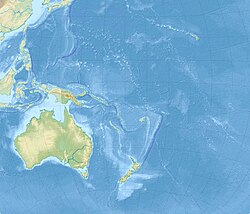Ogasawara-shoto
| UNESCO World Heritage Site | |
|---|---|

The Ogasawara Islands, consisting of the Mukojima, Chichijima, and Hahajima island groups, are located far south of the Japanese home islands
|
|
| Official name | Ogasawara Islands |
| Location | Japan |
| Includes | islands, reefs, marine areas |
| Criteria | Natural: (ix) |
| Reference | 1362 |
| Inscription | 2011 (35th Session) |
| Area | 7,939 ha (30.65 sq mi) |
| Coordinates | 27°43′6″N 142°5′59″E / 27.71833°N 142.09972°E |
The Bonin Islands, also known as the Ogasawara Islands (小笠原群島 Ogasawara Guntō), are an archipelago of over 30 subtropical and tropical islands, some 1,000 kilometres (540 nmi; 620 mi) directly south of Tokyo, Japan. The name "Bonin Islands" comes from the Japanese word bunin (an archaic reading of 無人 mujin), meaning "no people" or "uninhabited". The only inhabited islands of the group are Chichijima (父島), the seat of the municipal government, and Hahajima (母島), which includes Ogasawara Village.
Ogasawara Municipality (mura) and Ogasawara Subprefecture take their names from the Ogasawara Group. Ogasawara Archipelago (小笠原諸島 Ogasawara shotō) is also used as a wider collective term that includes other islands in Ogasawara Municipality, such as the Volcano Islands, along with other small, uninhabited and isolated islands. Geographically speaking, all of these islands are part of the Nanpō Islands.
A total population of 2,440 (2015), 2,000 on Chichijima and 440 on Hahajima, lives in the Ogasawara Group, which has a total area of 84 square kilometres (32 sq mi).
Because the Ogasawara Islands have never been connected to a continent, many of their animals and plants have undergone unique evolutionary processes. This has led to the islands' nickname of "The Galápagos of the Orient", and their nomination as a natural World Heritage Site on June 24, 2011. The giant squid (genus Architeuthis) was photographed off the Ogasawara Islands for the first time in the wild on 30 September 2004, and was filmed alive in December 2006.
...
Wikipedia

